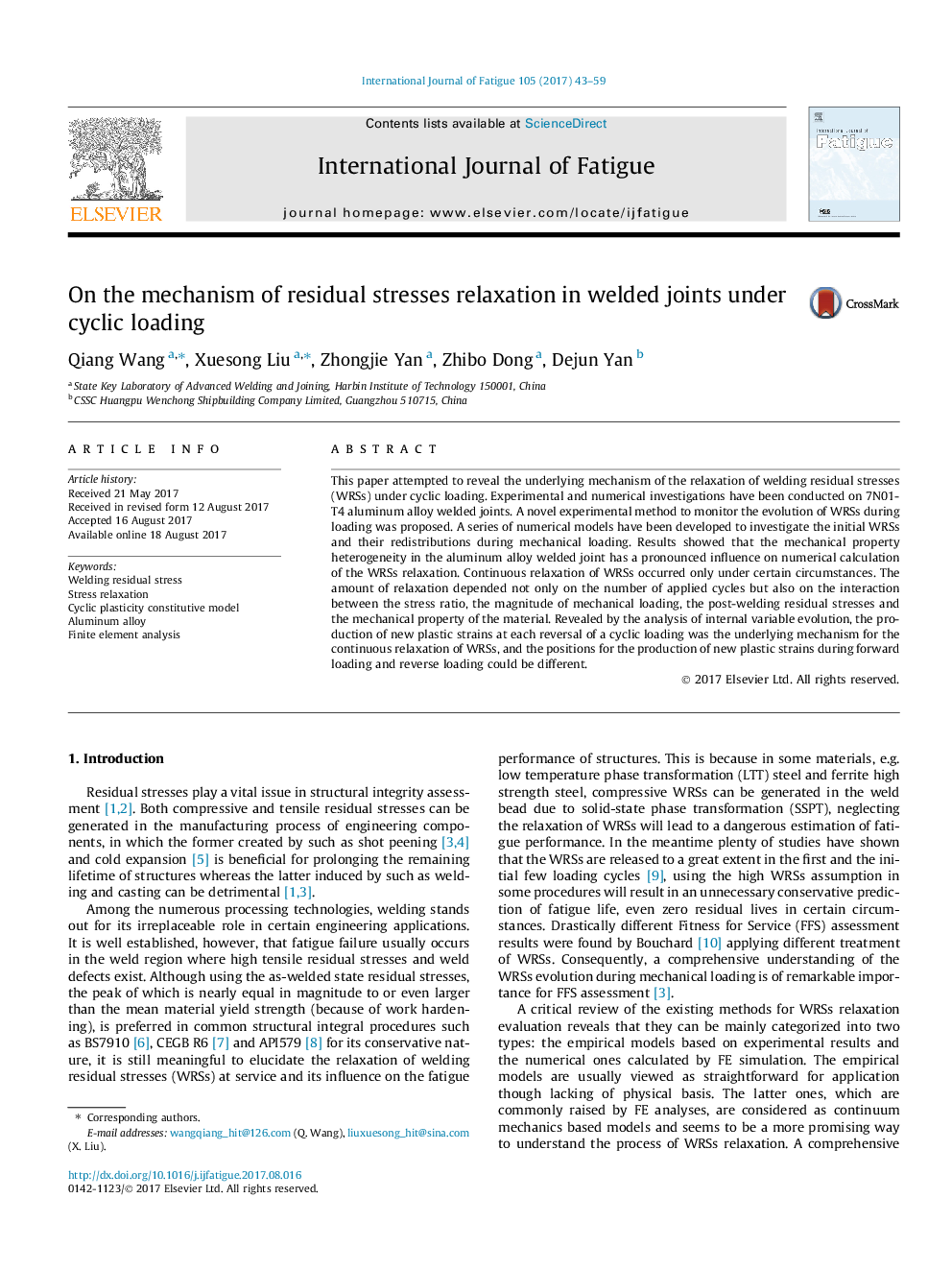| Article ID | Journal | Published Year | Pages | File Type |
|---|---|---|---|---|
| 5014908 | International Journal of Fatigue | 2017 | 17 Pages |
Abstract
This paper attempted to reveal the underlying mechanism of the relaxation of welding residual stresses (WRSs) under cyclic loading. Experimental and numerical investigations have been conducted on 7N01-T4 aluminum alloy welded joints. A novel experimental method to monitor the evolution of WRSs during loading was proposed. A series of numerical models have been developed to investigate the initial WRSs and their redistributions during mechanical loading. Results showed that the mechanical property heterogeneity in the aluminum alloy welded joint has a pronounced influence on numerical calculation of the WRSs relaxation. Continuous relaxation of WRSs occurred only under certain circumstances. The amount of relaxation depended not only on the number of applied cycles but also on the interaction between the stress ratio, the magnitude of mechanical loading, the post-welding residual stresses and the mechanical property of the material. Revealed by the analysis of internal variable evolution, the production of new plastic strains at each reversal of a cyclic loading was the underlying mechanism for the continuous relaxation of WRSs, and the positions for the production of new plastic strains during forward loading and reverse loading could be different.
Keywords
Related Topics
Physical Sciences and Engineering
Engineering
Mechanical Engineering
Authors
Qiang Wang, Xuesong Liu, Zhongjie Yan, Zhibo Dong, Dejun Yan,
